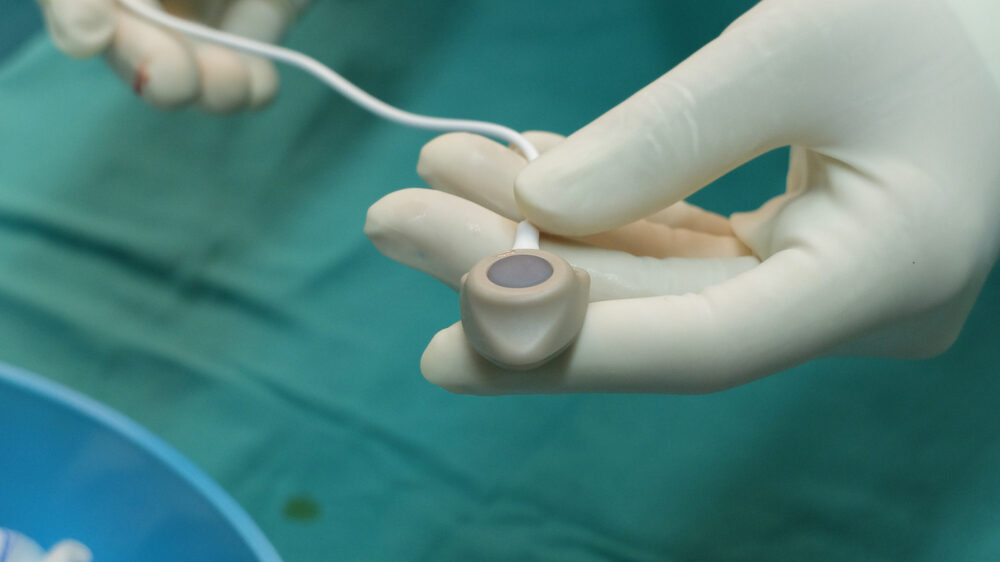Eligible for a Bard PowerPort lawsuit?
Polyurethane Port Catheter Systems Fail Faster Than Silicone, Pediatric Study Finds
Researchers indicate polyurethane catheters, such as those used in Bard PowerPort implants, often lead to early device failure and infections.

A new study highlights potential risks associated with venous port catheters, which are implanted in patients who must receive frequent drug injections, indicating that devices equipped with catheters made of polyurethane have much shorter lifespans than those made of silicone.
In findings published earlier this month in the medical journal Frontiers in Oncology, researchers from Poland report that the type of material used in port catheters have a significant effect on how long they last before failing or needing replacement, as well as the risk of infections.
The report comes as a growing number of Bard PowerPort lawsuits continue to be filed nationwide, over infections and other problems linked to use of the devices, which feature polyurethane catheter tubes.
Bard PowerPort Lawsuit Concerns
There are currently about 115 complaints filed against C.R. Bard, each raising similar allegations that users developed devastating infections, blood clots and other complications after the port catheter material degraded and failed. However, plaintiffs’ lawyers have suggested that more than 2,000 lawsuits are likely to be filed over Bard PowerPort failures in the coming years.
The Bard PowerPort, also known as a totally implantable vascular access device (TIVAD), is used to deliver chemotherapy and other medications directly into the blood vessel, involving an injection port site, where a needle is inserted, as well as a polyurethane catheter tube that delivers the fluid to the body.
While the port catheter has been marketed as safe and effective by C.R. Bard and it’s Becton Dickinson parent company, lawsuits allege that the manufacturers knew or should have known that the Bard PowerPort catheter material, which includes polyurethane, is prone to degrade over time, allowing bacteria to develop or small pieces to break off. This can lead to infections and a risk of pulmonary embolism, as well as port catheter failure and the need for revision surgery.

Bard Port Catheter Lawsuit
Serious and life-threatening injuries have been linked to problems with Bard PowerPort. Lawsuits are now being pursued by individuals who suffered injuries from the implantable port catheter fracturing or migrating.
Learn More About this Lawsuit See If You Qualify For CompensationIn this latest study, researchers looked at data on 383 pediatric patients treated at the Department of Pediatric Surgery, Traumatology, and Urology in Poznan from 2013 to 2020. The pediatric patients underwent a total of 474 port implantations during that time period in 345 patients, with 90% receiving them for chemotherapy treatments, and 10% for other non-cancer related illnesses.
Common complications included infections, venous catheter obstruction, port system leakage and pneumothorax and port pocket hemotoma. However, those risks were often significantly higher depending on the surgery used to implant the devices and what the implants were made of, the researchers determined.
“Children with a diagnosis of non-Hodgkin’s lymphoma, acute myeloid leukemia, and acute lymphoblastic leukemia had a significantly higher incidence of port infections,” the researchers concluded. “Venous ports equipped with a polyurethane catheter, compared to systems with a silicone catheter, functioned significantly shorter.”
The researchers found that polyurethane catheters, like those used by Bard PowerPort implants, were 1.7 times more likely to fail earlier than silicone catheters. They also determined that early port failure was five times higher among children who developed a venous port infection.
May 2024 Bard PowerPort Lawsuit Update
Given nearly identical allegations raised in complaints filed throughout the federal court system over the first half of last year, the U.S. Judicial Panel on Multidistrict Litigation decided to centralize all Bard chemo port lawsuits in August 2023, transferring the claims to U.S. District Judge David G. Campbell, in the District of Arizona, for coordinated discovery and pretrial proceedings as part of a federal MDL, or multidistrict litigation.
To help manage the claims and gauge how juries are likely to respond to certain evidence and testimony that will be repeated throughout the litigation, Judge Campbell has established a bellwether trial process, where a group of 24 initial Bard PowerPort lawsuits will go through discovery and be prepared for a series of early trial dates.
The parties have been directed to submit the list of bellwether cases by July 1, 2024, selecting from any lawsuits filed by April 1, 2024.
After the bellwether cases are selected, the parties will conduct further case-specific discovery, including depositions and work up for trial. Those claims will later being reduced down to six Bard PowerPort bellwether trial cases, which will be set to go before juries to gauge how they may respond to certain evidence and testimony that will be repeated throughout the litigation.
Following discovery, the parties will attempt to agree on the final six bellwether claims by March 10, 2025, and it is widely expected that the first trials may begin by late 2025 or early 2026.
While the outcomes of these early bellwether trials will not have any binding impact on other claims pending in the MDL, including claims filed after the April 1 deadline, they will likely have a major impact on Bard Power Port settlement negotiations and any attempt to resolve large numbers of claims.






0 Comments